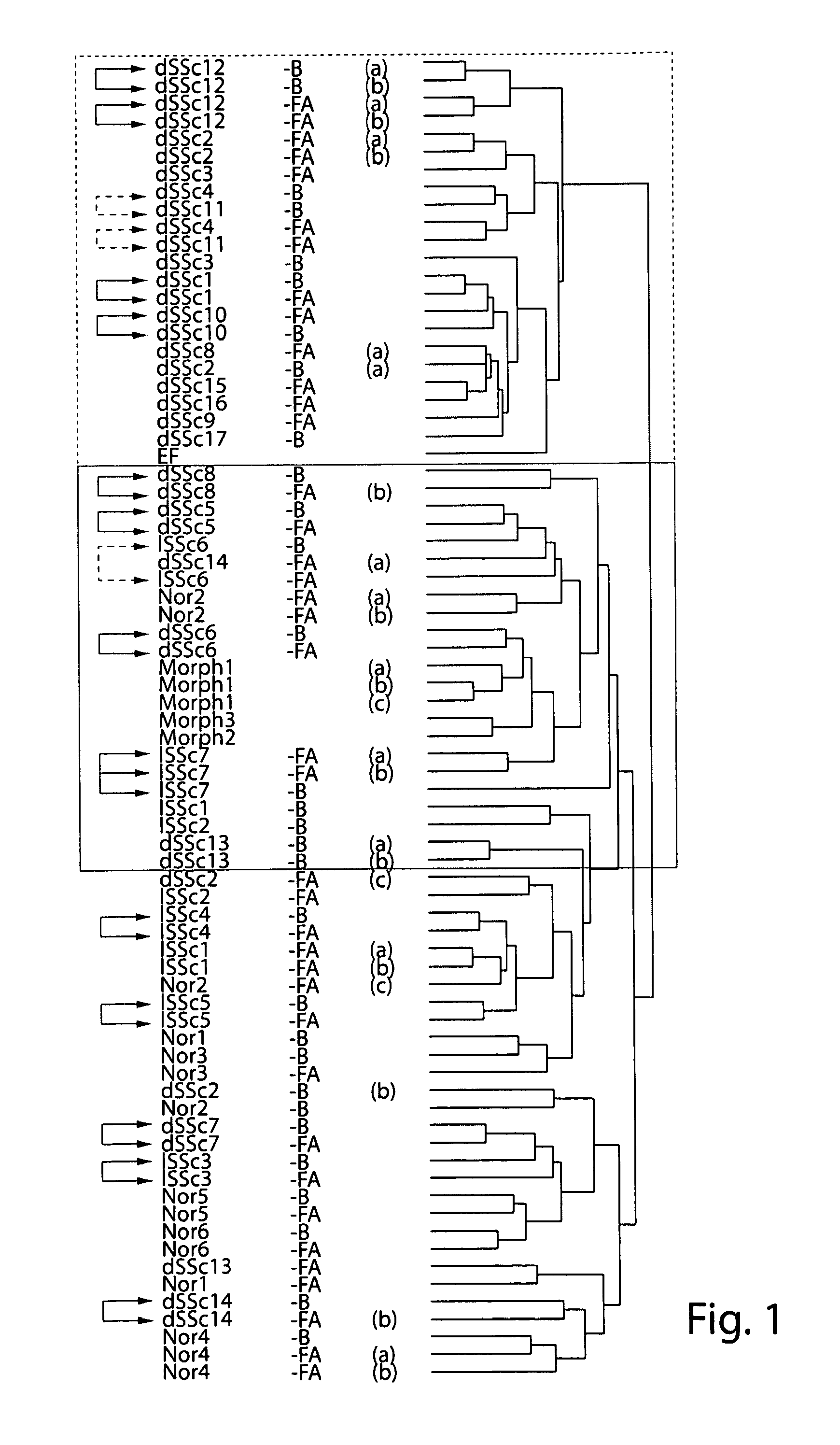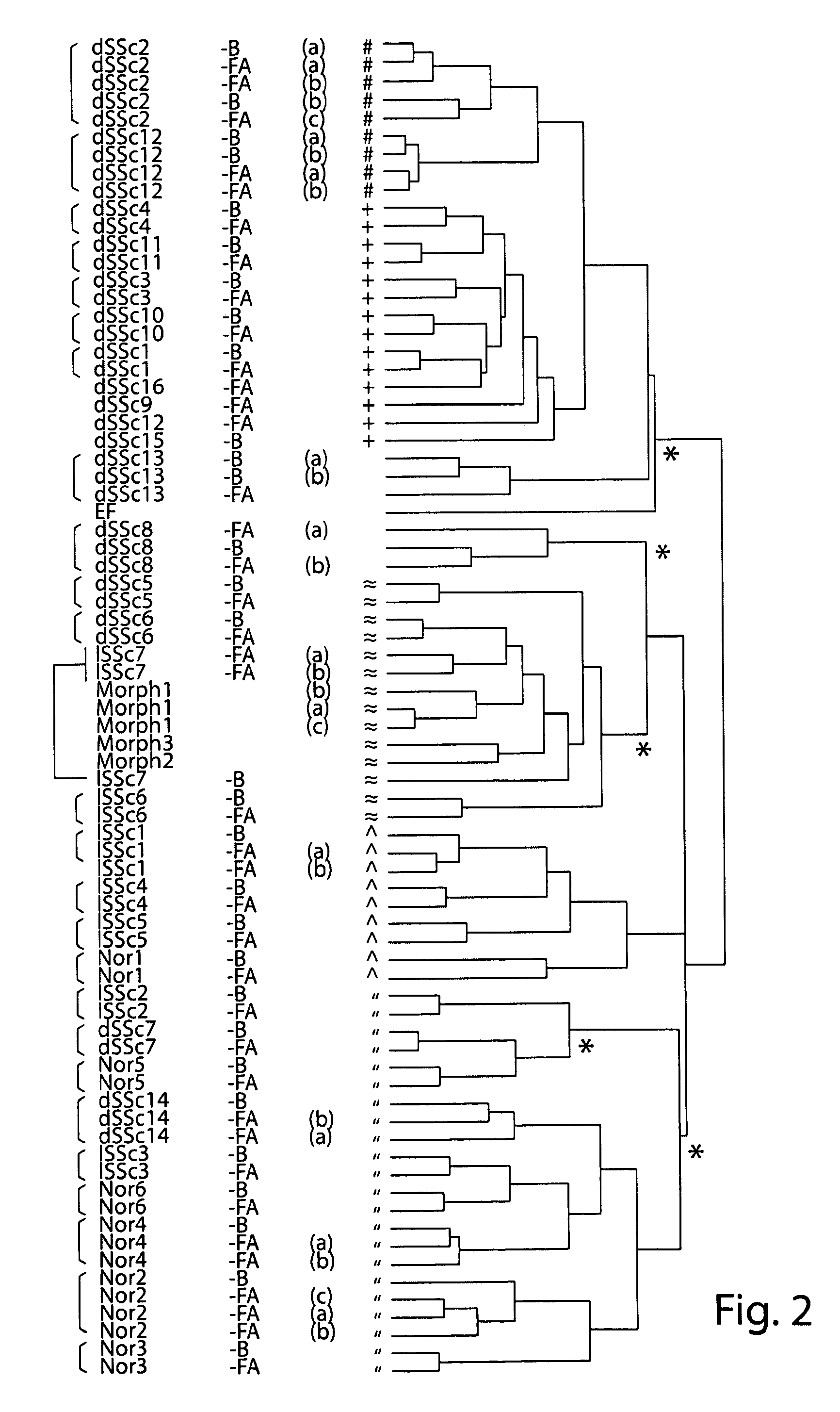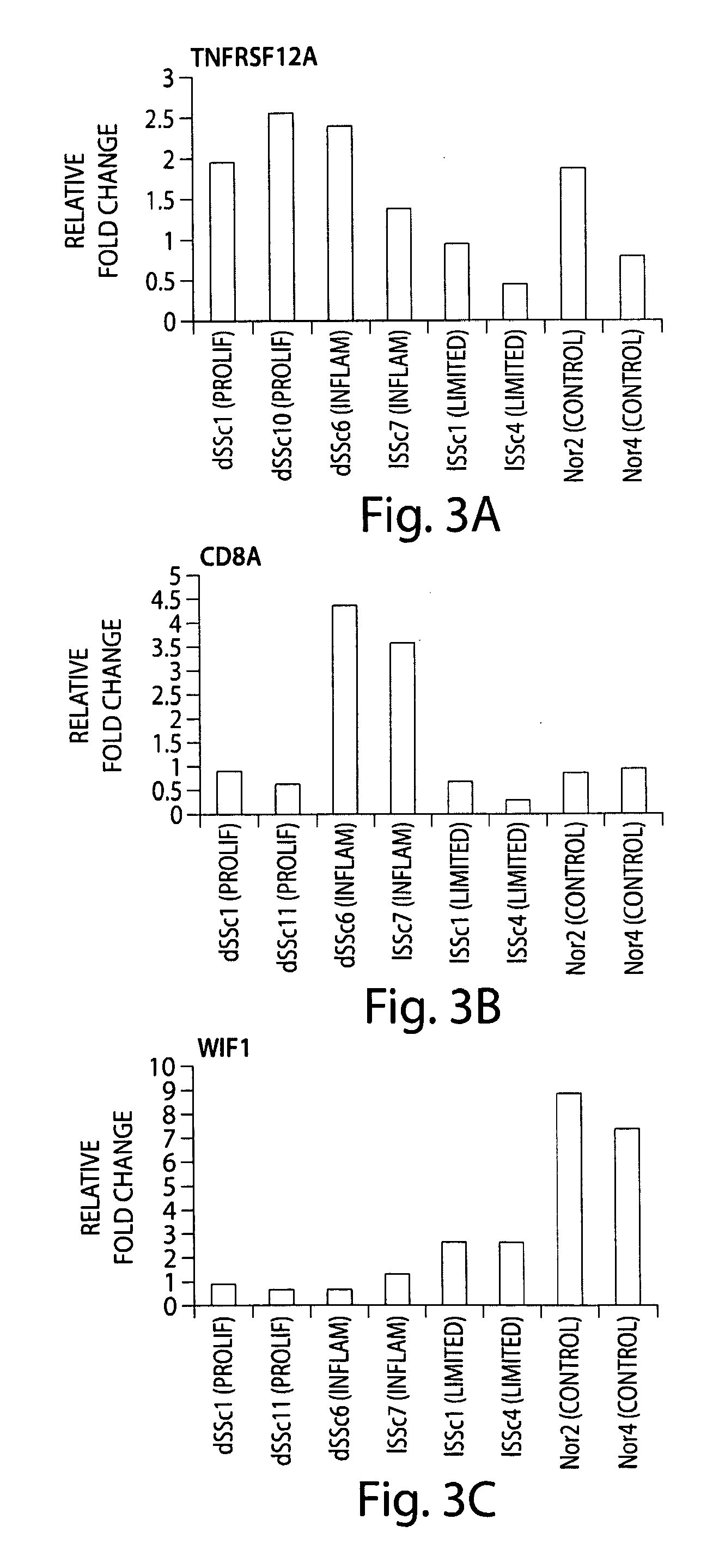Molecular signatures for diagnosing scleroderma
- Summary
- Abstract
- Description
- Claims
- Application Information
AI Technical Summary
Benefits of technology
Problems solved by technology
Method used
Image
Examples
example 1
Molecular Subsets in the Gene Expression Signatures of Scleroderma Skin
[0091]All subjects signed consent forms, met the American College of Rheumatology classification criteria for SSc (Committee. SfSCotARADaTC (1980) supra), and were further characterized as the diffuse (dSSc) (Leroy, et al. (1988) supra), or the limited (lSSc) subsets (Mayes M D (1998) supra). LSSc patients had three of the five features of CREST (calcinosis, Raynaud's syndrome, esophageal dysmotility, sclerodactyly and telangiectasias) syndrome, or had Raynaud's phenomenon with abnormal nail fold capillaries and scleroderma-specific autoantibodies. The diffuse systemic sclerosis (dSSc) had wide-spread scleroderma and MRSS ranging from 15 to 35. The lSSc patients had MRSS ranging from 8 to 12. Patients with undifferentiated connective tissue disease (UCTD) were excluded from the study.
[0092]Skin biopsies were taken from a total of 34 individuals: 17 patients with dSSc, seven patients with lSSc, three patients with...
example 2
TGFβ-Activated Gene Expression Signature in Diffuse Scleroderma
[0147]Cells and Cell Culture. Clonetics primary adult human dermal fibroblasts were purchased from Cambrex Bio Science Walkersville, Inc. (Walkersville, Md.). Primary adult dermal fibroblasts were isolated from explant cultures of healthy and SSc forearm skin biopsies were cultured for at least three passages in Dulbecco's modified Eagle's medium (DMEM), 10% (v / v) fetal bovine serum (FBS), penicillin-streptomycin (100 IU / ml). Cells were passaged approximately every seven days for 7-10 passages prior to use in time course experiments. All incubations were conducted at 37° C. in a humidified atmosphere with 5% CO2.
[0148]BrdU Staining. Cells were grown on coverslips as and cell proliferation assessed using a 5-Bromo-2′-deoxy-uridine Labeling and Detection Kit I (Roche Applied Sciences, Indianapolis, Ind.). Briefly, at appropriate time points, cells were labeled by incubating coverslips in DMEM supplemented with 0.1% FBS and...
example 3
Computational Framework for Identifying Individual Biomarkers
[0164]Due to inherent complexity of peripheral blood samples, computational tools have been developed to extract the maximum amount of information from the PBC datasets. The goal of these computational approaches is to identify the minimum number of genes that will classify samples into groups based on clinical parameters or predefined groupings, when their gene expression patterns are combined. One way to determine the relationship between the expression of multiple genes and a clinical observation is to use linear discriminant analysis (LDA). LDA is a method to classify patients into groups based on features that describe each patient, such as the gene-expression of specific genes. A combination of variables and constants are found that generate an effective discriminant score that separate two groups. The general equation is in the following form, where Ck is a constant and Genek is the expression of level of gene k in ...
PUM
| Property | Measurement | Unit |
|---|---|---|
| Fraction | aaaaa | aaaaa |
| Fraction | aaaaa | aaaaa |
| Length | aaaaa | aaaaa |
Abstract
Description
Claims
Application Information
 Login to View More
Login to View More - R&D
- Intellectual Property
- Life Sciences
- Materials
- Tech Scout
- Unparalleled Data Quality
- Higher Quality Content
- 60% Fewer Hallucinations
Browse by: Latest US Patents, China's latest patents, Technical Efficacy Thesaurus, Application Domain, Technology Topic, Popular Technical Reports.
© 2025 PatSnap. All rights reserved.Legal|Privacy policy|Modern Slavery Act Transparency Statement|Sitemap|About US| Contact US: help@patsnap.com



